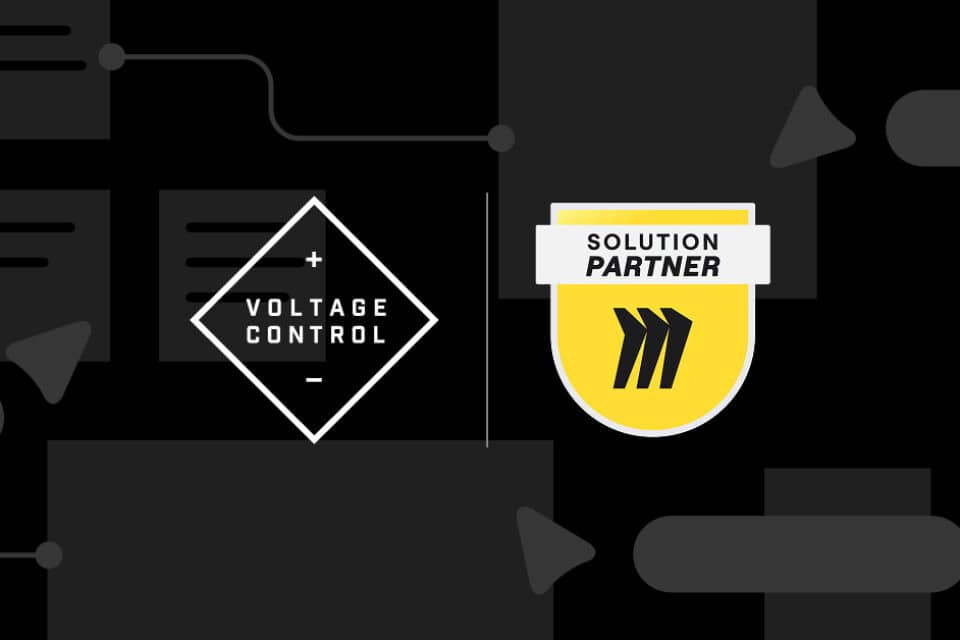A systems approach to AI transformation that turns teams into conveners
Table of contents
As November settles in, teams naturally shift into long-view mode. It’s the season for pruning, strengthening roots, and harvesting insights from the year so we can plant smarter in the next one. That rhythm is tailor-made for the kind of thinking AI transformation actually requires—systems thinking. Because while AI can accelerate what works, it can also amplify what doesn’t. If you adopt it as a series of isolated tools, you risk scaling the very patterns you’re trying to change.
This month, we invite you to step back and see the whole. AI transformation is not a tool swap; it’s a chance to redesign roles, rituals, rules, and boundaries across your organization. When you map the system together—actors, relationships, flows, and incentives—you uncover bottlenecks before they appear, create better decision pathways, and frame experiments that compound learning rather than stall in governance fog.
Our Activity of the Month is Systems Mapping, inspired by the session Erik Skogsberg and Dirk Van Onsem led at the Facilitation Lab Summit 2024. If you’ve never mapped a system with your team, this is the perfect time to try. If you’re already mapping, this is the perfect time to revisit your map, stress-test your future state, and align on experiments that everyone can rally around.
Below, you’ll find a practical, seven-part guide to approach AI with a systems lens—complete with an activity you can run in 60–90 minutes, ways to anticipate tomorrow’s bottlenecks today, and facilitation moves that turn digital transformation teams into conveners of clarity. Let’s get you set to map before you move.
See The Whole To Change The Parts
AI adoption tends to enter organizations as a noun—a new platform, pilot, or policy. But sustainable transformation lives in the verbs—how we decide, coordinate, hand off, learn, and adapt across the system. If you focus on “the tool” you’ll optimize pockets of work. If you focus on “the work,” you’ll redesign the moves that matter most—especially the moves between people and teams where friction and value compound. Verbs over nouns is the mental shift that keeps AI from amplifying yesterday’s patterns.
That shift is only possible when you broaden your container. Instead of asking what AI can do for one role or function, ask what becomes possible across roles, rituals, rules, and boundaries. Where are decisions waiting on a single person? Which incentives reward local wins at the expense of system outcomes? Which rules were written for old constraints that no longer apply? Seeing those dynamics is what lets AI actually change the system, not just accelerate it.
It helps to imagine your organization as an ecosystem, not an org chart. Ecosystems thrive through flows—of information, decisions, value, trust. When we talk about AI adoption, we’re really talking about ecosystem gardening, not gadget shopping. It’s the work of cultivating healthy relationships, pruning outdated norms, improving the soil of incentives, and introducing new capabilities with intention.

Most important, a systems view honors human needs. Change lands well when people feel safe, skilled, and significant. If fear is present, judgment narrows and teams retreat to what they can control. That’s why a facilitative stance matters. Check-ins, working agreements, and visual artifacts create a shared field of view. They lower the waterline of uncertainty so teams can engage, learn, and own the change together.
Make It Visible Together
Systems are invisible until you draw them. The fastest way to move from assumptions to alignment is to make your work visible—actors, relationships, dependencies, decision points, and feedback loops. When it’s out on the board, you can collectively see where latency piles up, where incentives subtly pull teams apart, and where a small change could unlock major flow.
We love Miro as a base container for this work because it supports both divergence and convergence in one place. You can invite many perspectives, surface assumptions quickly, then converge on the parts that matter for your next move. With Miro’s AI features, you can even bring in an “extra lens” to help spot patterns—emerging loops, clusters, or contradictions—that the group can then interpret, validate, and refine.
A critical step is asking whose voices are missing from the container. If you’re mapping a process without someone who lives its pain points, you’ll miss essential nuance. If you’re designing decision rules without folks who actually carry them out, you’ll create elegant bottlenecks. Make your invitations explicit: who co-owns this map, what benefits and responsibilities come with participation, and how the artifact will be used beyond the workshop.
Finally, remember that maps are prototypes. The goal isn’t a perfect diagram, it’s collective insight. A good systems map gives you enough clarity to move, learn, and iterate. Hold it lightly. Update it as you test, so your shared understanding grows. When the map changes, that’s not rework; it’s progress.
Activity Of The Month: Systems Mapping
If you run just one session this month, make it a 60–90 minute systems mapping workshop. This is a practical, low-lift way to transform big conversations about AI into concrete decisions and experiments. Our facilitation team has been running versions of this for years, and the moves are straightforward to adapt to your context.
Start by clarifying purpose and boundaries. In 10 minutes, align on what system you’re mapping and where it starts and ends for this session. Then list actors—teams, roles, customers, partners, tools, policies—who impact or are impacted by this system. In the next 20–30 minutes, map flows: how work actually moves today. Surface handoffs, delays, and decisions. Highlight where information waits, where approvals stack up, and where “ghost rules” create drag.
In 20 minutes, annotate the map with friction points and incentives. Where are people rewarded for local optimization? Where are norms or policies written for constraints that no longer exist? Where does trust have to be rebuilt for a new move to stick? As you talk, capture opportunities for AI to help at the system level: better triage at handoffs, improved decision support at key thresholds, smart routing to reduce latency, or lightweight automation where waste is predictable.
Close by harvesting experiments and decision rules. Choose 2–3 experiments you can run within 30–45 days. For each, name the owner, success signal, consent threshold, and a safety check or ethical red line. Define how you’ll make the decision to scale, reverse, or sunset. This small governance layer keeps learning fast and trust high. For more background and inspiration, watch the Activity of the Month video and revisit Erik Skogsberg and Dirk Van Onsem’s 2024 Facilitation Lab Summit talk on systems mapping:
Find Tomorrow’s Bottlenecks Today
The most valuable maps don’t just describe today; they help you see around corners. As AI introduces new capabilities, bottlenecks move. You may reduce time on a task and inadvertently flood a downstream team. You may open access to information and discover that decision rights—not data—are your new constraint. Mapping lets you anticipate those shifts so you’re not surprised when your pilot meets friction.
One powerful move is to run a premortem on your future state. Sketch the improved flow you want with AI in place. Then ask, “It’s three months from now and the pilot failed—what happened?” Look specifically at four areas: data access, decision latency, policy gates, and trust. Where will approvals slow you down? Where is risk-threshold clarity missing? What new handoffs appear that weren’t there before? This is how you “pre-mortem the future” so the future doesn’t mortem your pilot.

This is also where governance benefits from a reframing. Many teams get stuck because governance shows up as a heavy brake. Try treating governance as choreography—the roles, rules, and rhythms that keep you moving responsibly. Define consent thresholds for experiments, decision rights for scaling, safety checks for sensitive data, and clear reversibility criteria so decisions can be unmade with minimal cost. When governance clarifies motion, momentum follows.
Finally, watch for latency loops that quietly drain energy. When decisions repeatedly wait on one person, consider role-based or rule-based approaches that preserve accountability without creating single points of failure. When a policy meant to protect inadvertently blocks benign learning, craft lightweight “sandbox” zones with clear boundaries. Each constraint you make explicit lowers the cognitive load on your team and raises your chance of compounding wins.
From Commanders To Conveners
Digital transformation teams are increasingly being asked to lead AI strategy and enablement. The temptation is to become the owner of the answers—publish standards, pick platforms, roll out roadmaps. But in complex environments, invitations beat mandates. The most effective transformation teams act as conveners of clarity, not commanders of compliance.
Being a convener means you design the spaces where cross-functional sensemaking happens. You set cadence, craft agendas that surface trade-offs, and make the work visible. Decision logs, journey maps, and systems maps become the living artifacts that align stories when memories diverge after the meeting. Instead of “big announcement” heroics, you build trust through reliable rituals and transparent artifacts that anyone can reference.
Co-ownership is key. Ask yourself: who needs to co-create and co-own the map for it to matter? Which leaders and operators must be present for decisions to stick? Spell out the benefits and responsibilities of participation in plain language. This sense of authorship is what turns alignment into commitment. When people see themselves in the work, they carry it forward without extra push.
This stance also transforms your messaging. Rather than “Here’s the tool we’re rolling out,” try “Here’s what we want to get better at doing together, and here are the experiments we’ll run to learn how.” Verbs over nouns. Process over prescriptions. In our experience, the more your team is asked for answers they can’t hold alone, the clearer the signal that it’s time to convene the system.
Incentives, Norms, and Skill Building
Many AI “adoptions” stall because the organization’s incentives are tuned for local optimization. A team gets rewarded for shipping more tickets, so they resist a change that would slow their queue to speed value end-to-end. Or a policy written for old constraints blocks safe experimentation under new constraints. Systems mapping helps you spot these misalignments so you can adjust rules and rewards to fit the era you’re actually in.
When you identify friction on the map, treat it as a design clue, not a personal failure. Ask, “What agreement, norm, or slight boundary change would unclog this without shifting the burden somewhere else?” That last part matters. A superficial fix often moves the problem downstream. The systems view helps you see those second- and third-order effects before you pull a lever.
Skill-building belongs inside the work, not outside of it. Instead of one-off trainings, create peer-led practice circles that meet regularly. Turn early adopters into coaches without anointing them gatekeepers by pairing them with peers and rotating roles. Use check-ins to surface where people feel unsafe or unskilled, then scaffold practice moves into your routines. When people feel safe, skilled, and significant, they try new things. That’s the engine of transformation.
Finally, clarify decision-making patterns so experiments don’t stall. Define when consent is sufficient, when advice is required, and when a higher threshold is needed. Make decisions visible and, where possible, reversible. The goal is not reckless speed; it’s responsible velocity—the discipline to go fast where it’s safe and slow where it’s wise, with clarity everyone can trust.
Cadence, Artifacts, and the Power of Visible Agreements
Cadence builds trust. Sporadic heroics and big-bang announcements breed resistance; steady, predictable rhythms build reliability. Think weekly mapping huddles, biweekly experiment reviews, and monthly retros that refine working agreements. This isn’t ceremony for ceremony’s sake. It’s the social choreography that turns insight into practice and practice into capability.
Artifacts align stories when memories diverge. After a workshop, each person carries a slightly different recollection of what was decided. A living map, a simple decision log, and a one-page experiment sheet reduce rework and confusion. Ask, “Which artifact would most reduce rework this month?” Then keep it live—visible, updated, and used—rather than letting it become a static prop.
Co-own your artifacts to strengthen buy-in. If the transformation team is the sole author, artifacts can feel like compliance documents. When leaders and operators co-create, artifacts become references people trust. Make sure each artifact lives where the work lives, not tucked into an obscure folder. Visibility is an invitation.

And let’s talk cadence that sustains momentum without fatigue. Use check-ins to tune pace and focus. If your rituals are creating drag, prune them. If they’re building clarity and confidence, strengthen the roots. This is the season to ask: what cadence serves our goals, and what can we let go of to protect energy and attention for the work that matters most?
November Harvest and Your Next Move
November is a natural time to harvest insights and prune scope so new growth can thrive. Look across your meetings, decision rules, and flows. What will you sunset to make space for better practices? Which rules were written for constraints that AI has lifted? Which norms reward silo wins over system outcomes? Retire rituals gracefully. Name what you’re letting go of and why. That story helps people release the old to welcome the new.
Use your map to make smart trade-offs explicit. When you reduce scope, show the dependencies you’re preserving and the risks you’re accepting. When you create a sandbox for safe learning, document the boundaries and the reversibility. Transparency compounds trust. The more clearly you visualize trade-offs, the more confidently your team can move.
As you look ahead, ask a few focusing questions: What cadence will sustain momentum without fatigue? Where are skills uneven across roles, and how might peer-led practice close the gap without creating gatekeepers? How will we connect AI use cases to our purpose and values so participants carry a clear story back to their teams? Those stories are how change scales.
Call to action: Run a 60–90 minute systems mapping session before the month ends. Clarify your purpose and boundaries. List actors. Map flows, handoffs, and decision points. Identify friction and incentives. Harvest two or three experiments with clear decision rights and safety checks. Watch our Activity of the Month video to guide your session, and revisit our write-up on facilitating change by mapping systems. Then share your map and learnings with your broader org to build momentum. If you want a partner, Voltage Control can facilitate your first mapping session or coach your team to lead its own. Let’s map before we move—so your AI transformation amplifies what you value most and your system is ready for what’s next.
Resources:
Facilitating Change by Mapping Systems
Activity of the Month Video Systems Mapping
Ready to convene clarity? Reach out to schedule a mapping clinic, join an upcoming facilitation certification, or bring Voltage Control in to help your digital transformation team lead with a systems lens.


